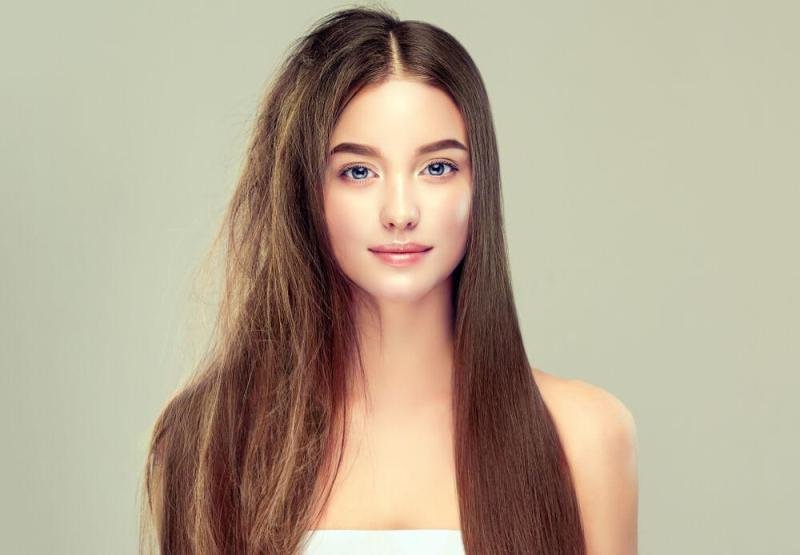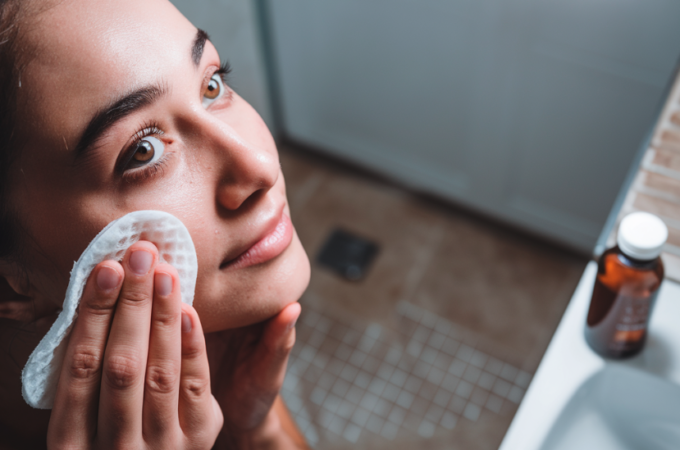
Everything You Need To Know About Keratin Hair Treatments
Most women would agree that Keratin treatment is behind all genuinely smooth, silky, healthy and shiny hair alighting various Instagram posts.
While Keratin treatment sounds over-hyped, it actually is underrated. No matter how we picture it, we just can’t put our fingers to it.
Questions surround such treatment. Its enigmatic feel has been fed through the years by stereotypes, bewilderment, assumptions, and more questions.
For one sure thing—it is popular!
Most women prefer Keratin treatment over other treatments. Nay, it’s the most preferred treatment of all.
But, how expensive is it really? Who is certified to do keratin treatment on your hair? Can it secretly damage the hair?
More of these questions surround keratin hair treatment, so I decided to break it all down for you.
Are you ready for some shiny facts? Because, you’ll finally get to know actual facts about keratin hair treatments, mate!
What is Keratin?
Just imagine keratin as the light-bearer that secures the growth of hair, nails and outer skin layer in your body.
Its only job is to secure, and not deliver proteins directly. It’s got the fibrous structural proteins to do that.
Obviously, it’s the proteins that build the hair and nails. However, this specific type of fibrous protein won’t be able to do so without the keratin’s prodding.
Being the light-bearer, the keratin guides protein and gives purpose to it.
By the looks of it, the keratin runs as one of the busiest compounds in the body.
One of its main functions—besides securing the growth of nails and hair, is to protect cells from damage.

And, when there’s damage, the keratin acts out with all its power juices.
Apparently, with all its running-around, keratin quickly dries up. When it happens, the body runs out of it. Among the major signs of keratin loss in the body is cell damage, skin discolouration and most overtly, hair frizzes.
Hair frizzes. Women would trade everything just to get rid of it. They would do so even if it takes a chemical toll on their hair.
Hair frizz is an immediate indication of stress, and/or lack of keratin in the body. Some hair frizz cases quickly turn around with minor hair applications, but most don’t, deeming absolute need for keratin hair treatments.
What is Keratin Hair Treatment: What You Need to Know?
Keratin treatment (or, keratin treatments to emphasize it’s being an umbrella to varied types) functions as a highly concentrated chemical correction method for dry, damaged and frizzy hair.
To know more about the side effects, please read What Are the Side Effects of a Keratin Treatment?
It’s partially invasive as it penetrates follicle level to intensively repair cell damage within. Meanwhile, it combines various chemical formulas depending on the stylist’s decision.
The classic concoction of the keratin treatments was fully invasive, though. The Brazilian blowout method for instance, which originated in Brazil under the bountiful discipleship through Marcia Teixeira.
Fortunately, the process toned down into the finer Rio keratin treatment by Arsen Gorgov.
Overall, the process involves injecting porous areas surrounding the hair follicles with enhanced proteins. Some of these chemicals, when heated up, release formaldehyde.
Yet again, depending on the formula concocted by the hairstylist, some applications may not produce the said chemical compound. In another favourable reality, low dosages of formaldehyde may already achieve the desired effect on your hair.
In this effect, the keratin hair treatment polarizes. Assumptions, speculations and many more ignorant claims instantly build up on the said treatment.
One side of the story claims that such treatment damages the hair.
But, the truth is more than black and white.
In fact, if you look at it within an educated frame, you’ll understand how healthy the treatment is for your hair.
Still, it can potentially damage your hair.
Semi-invasive or semi-permanent treatments of this type require proper reflection from your end.
Before ultimately deciding to let down your hair for treatment, you’ll have to:
- Consult with certified hair experts if the treatment is right for you.
When I say consult a certified expert, I’m referring to a real, 100% certified expert. Perhaps, you can refer to the unbiased stylist. Someone who does not directly monetarily profit from you.
Regular, money-driven stylists would obviously recommend the treatment for you without carefully weighing the factors.
Better yet, ask advice from a friend who is a hair stylist!
- Determine if your hair type/texture is right for the treatment.
Be informed that as promising keratin treatment might sound, it still does not answer for all types of hair. It isn’t built equal in that aspect.
You’ll have to know yourself. With the help of experts, you’ll hopefully come to a healthy decision.
Know your hair type? Is it sensitive enough? Is it the dry type? Is it a brilliant type?
As they say, nobody knows your hair better than you!

- Labels surrounding the treatment vary. These can confuse you. Be informed about what you are really asking for. Then, the demand for it.
If you’re only eyeing to remove the frizz without sacrificing the volume, then what you need is a simple smoothing treatment.
If you are really keen for stick-like, sleek straightness then you need the tougher de-frizzing Brazilian blowout for that.
If you are into the more concentrated chemical hair repair, then it’s the traditional Brazilian blowout you’ll definitely enjoy, mate!
Some uninformed stylists use these names interchangeably, causing confusion and building stereotypes in the long run.
To free yourself from this, take matters into your own hands.
Types of Keratin Hair Treatment
Keratin hair treatment is an umbrella of variant treatments that utilize certain chemical combinations/formulas.
Treatments vary per person’s hair type, texture, color, follicular hold, etc.
Albeit their toning differences, these variants share the same chemistry—methanal, formalin, meth (methylene) glycol, enhanced protein, fine-quality protective silicone, etc.
The manipulation of these compounds greatly determines the direction of the treatment.
Simultaneously too, these chemicals invite concerns from the consuming public.
However, with enough knowledge over the actual facts surrounding the popular treatment, you can finally put your finger to it, and not be unnecessarily concerned.
Below are the specific types of keratin hair treatment:
- Soft/Smoothing Keratin
It works smoothly with the effect lasting 2-3 months. It generally reduces frizz without losing your hair’s volume (curls and waves).
Its process involves wrapping the hair from root to tip with toned-down non-formaldehyde infusion and a blowout by dryer for sealed effect.
This type of treatment is best benefited by medium texture haired-individuals.
- Keratin Express
A highly-temporary treatment, the Keratin express eliminates frizz (usually caused by dryness, loss of keratin) from wavy hair.
Its process involves injecting the hair’s porous areas with a serum-like solution. This is also further sealed by a flatiron and blow-dryer.
The customer can further maintain the effect with sulfate-free keratin-concentrated shampoo for the next 6 weeks
- Classic De-Frizzing Brazilian Blowout
This process works with a stronger concentration of enhanced keratin and other solutions that potentially release formaldehyde. Its de-frizzing effects can last for up to 8-9 months.
People with stronger hair types who seek to cut frizzes from hair best benefit from this.
The immediate output of this treatment is a flatiron, stick-straight hair.
- Brazilian Blowout
It works almost the same with the classic Brazilian treatment, only that it’s less concentrated.
- Japzilian Keratin
The treatment marries Japanese hair straightening method with Brazilian. With an effect that last 4-5 months, it slightly removes frizzes and repairs coarse hair.
The treatment works on all hair types.
Also, don’t forget that keratin-treated hair needs special care once it’s done. Like you can’t use all sorts of shampoos. You need sulfate-free shampoo. You can check out the list of best shampoos for your keratin-treated hair by theapricots. Otherwise, all the hard work might go in vain.

Conclusion
Keratin hair treatment/s is indeed a paradox on its own.
Despite being that popular, it still manages to invite speculations among people. Ignorance offers a hand on its misinformation, too.
It seems enigmatic until you learn its nitty-gritty. In most cases, it (including its variants) work with distinct effectiveness, while in some cases, it indirectly damages hair.
The direct culprit to its damage? You’re ignorance.
Therefore, it really pays to be informed.




